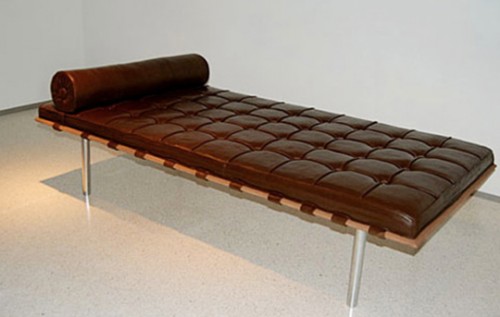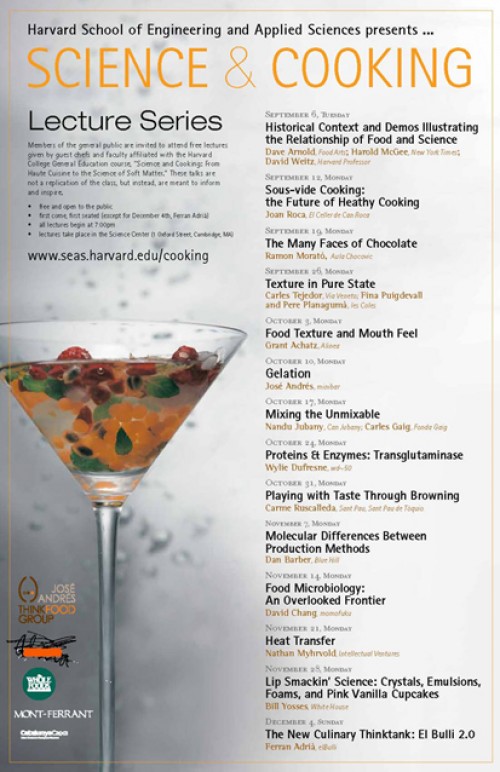Wacky World of Choc Wednesdays: Chocolate Furniture, Busts, and Product Placement
There’s wacky world of choc news to spare this week, with three stories just itching to be told.
First, Leandro Erlich’s sofa made out of cake (and frosted with chocolate – ooh la la!) made headlines here, here, here, and there.
The cake sofa, a replica of Mies van der Rohe’s Barcelona couch, was exhibited at New York’s Haunch of Venison gallery. The chocolate crafting is extraordinary – the pleats, buttons, and upholstery look just like leather.
Of course all good cake sofas must eventually be eaten.
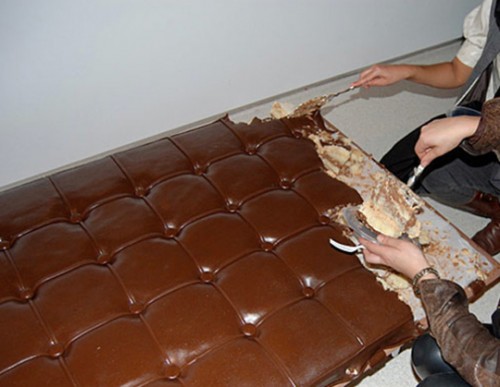
Second, Australian chocolatier Darrell Lea recently teamed up with ice sculptor Kenji Ogawa to produce three chocolate busts of famous Aussie dads. The busts are equal parts fun and weird.
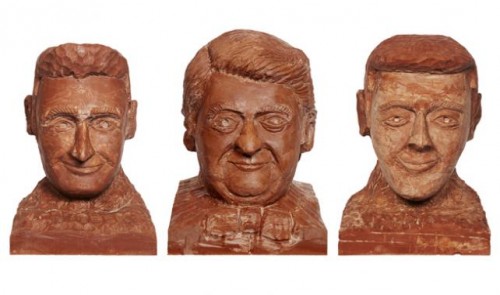
An article describes the busts as:
… a trio of one-of-a-kind, life-size chocolate replica busts in the likeness of celebrity fathers 7PM Project presenter and comedian Dave Hughes, TODAY Show host and genius MC Karl Stefanovic and professional masticator Matt Preston.
The artisan effort, however, is not merely a vanity project for Preston to indulge in some cultish, culinary ouroboros ritual in which he chows down on his own jowls with a pensive expression on his face: instead, money raised from the sale of the heads in an eBay auction will go toward the Save the Bilby Fund. Each sculpture took two days and 60kg of chocolate and a whole lotta self-restraint on Ogawa’s part:
“Lifelike faces are challenging to sculpt, particularly when it comes to accurately capturing the unique features of an individual. But, it is also highly rewarding and I loved the experience of working with chocolate to create these very unique pieces of art. I did however, have to stop myself from eating the shavings!”
(Bilbies are adorable, by the way, and its lovely that this group is working to save them. My, what big ears and pointy snouts they have!)
Here’s a behind the scenes video of the artist at work:
Third, soap opera blogs erupted with commentary on what was perceived as blatant, shameless product placement on a recent episode of ABC’s General Hospital. A scene featured two major characters discussing their love of Hershey’s Chocolate Syrup and clink-clinking glasses of chocolate milk in a special toast. As one commentator put it, “Not so surprisingly, the first commercial to run after that scene was for Hershey’s Chocolate Syrup.” To read a detailed description of the scene, see the full post.
If you’d like to watch and judge for yourself, here’s a video. The scene in question starts at 01:18 and ends at 02:43.
Given chocolate milk’s current embattled state in public schools, this is a product placement worth thinking about.
Bittersweet Notes in the press
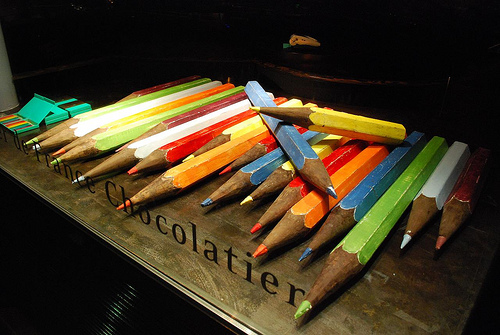
Chocolate pencils by Curtis Foreman
I’m pleased to report that Bittersweet Notes has gotten a bit of press recently, in the form of an article in Harvard’s The GSAS Bulletin (the monthly newsletter of events and information for students at Harvard’s Graduate School of Arts and Sciences, where I am a PhD Candidate).
The article, entitled “Bittersweet Symphony,” is available to read in PDF format here (just head to page 3). It includes the tag line “Celebrating chocolate – and exploring its complex socioeconomic and sustainability issues – Carla Martin turns a culinary passion into a scholarly analysis.” When I read that, I thought, “Oh crap! Is that what I’m doing?” There’s something about having the lens turned back on you that makes things surprising (and crystal clear).
I was interviewed by Jennifer Doody, a university writer and academic editor in Boston, MA, and, happily, a fellow chocolate lover. I really liked the questions that Jen asked, as they both inspired and challenged me to better define my project. Normally, I respond to questions about the project with a raised eyebrow stare followed by pointing at my “I like to say things and eat stuff” T-shirt. But I knew that just wouldn’t cut it this time. Jen also shared some wonderful chocolate stories of her own over the course of our correspondence.
I credit the opportunity for this article to the power of social media. [cue The Social Network soundtrack] I’m fairly certain that the kind folks behind the Harvard GSAS Twitter feed found me when I was Twitter preaching about something or other related to Massachusetts educational policy, and that my digital chatter alerted them to my big fat chocolate blog. Because this chocolate research project is relatively new, I have relied primarily on Facebook and Twitter to get the word out, and it’s very exciting to see the results of this strategy. Also, I can’t say enough about the vibrant community of chocolate lovers and experts on Twitter – I continue to learn from and with them every day.
My sincere thanks to writer Jennifer Doody, writer/editor Bari Walsh, and the many other staff members at Harvard’s GSAS for the opportunity to be a part of this thoughtful article.
chocolate in pictures
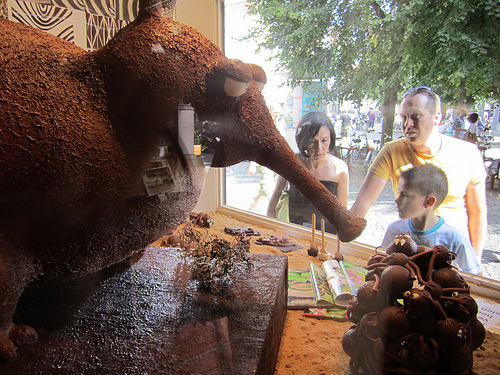
Chocolate Line, Brugge by Mary Lee Hahn
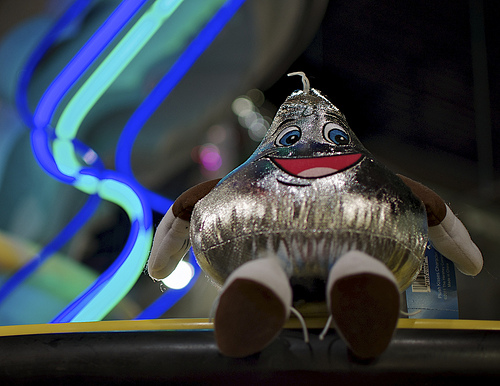
Chocolate World, Hershey Park by Robert Burakiewicz
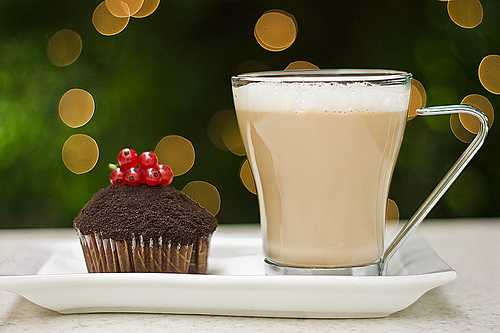
Double chocolate cupcake by alaczek
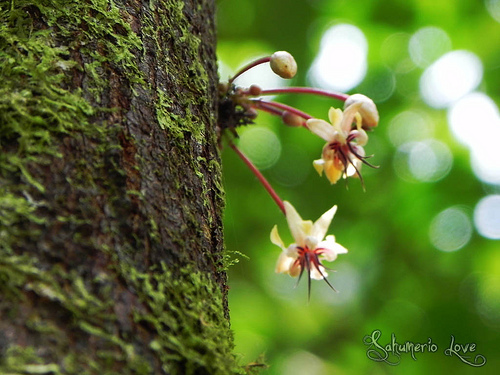
Flores de chocolate by Sahumerio Love
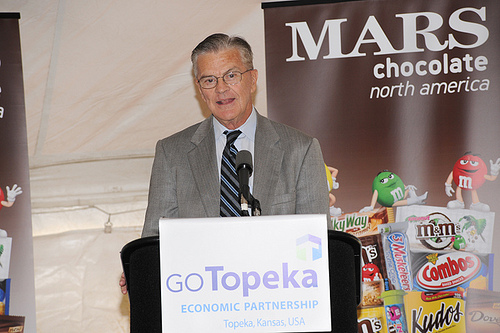
MARS Chocolate ground breaking in Topeka, Kansas by KDOTHQ

Untitled by Thomas Chapman
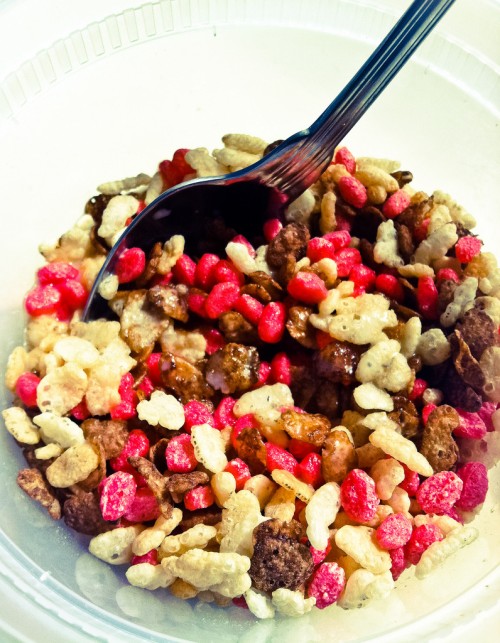
Ecuadorian Neapolitan by Katie Riek

Death By Chocolate by Mr. Evil Cheese Scientist
Wacky World of Choc Wednesdays: Chocolate, China, and Basketball
Here’s something fun for sporty chocolate fans. Beantown favorite Paul Pierce, of the (17-time World Champion!!!) Boston Celtics, on a recent trip to China, was immortalized with a commemorative chocolate figurine.
On August 26, Pierce, also known as The Truth, tweeted a photograph of the figurine, captioning it “The chocolate Truth.” Here it is:
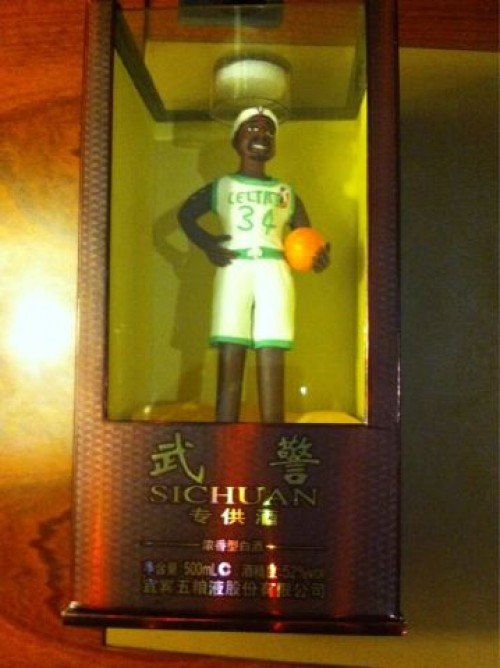
He also tweeted the following image of himself with his commemorative chocolate figurine:
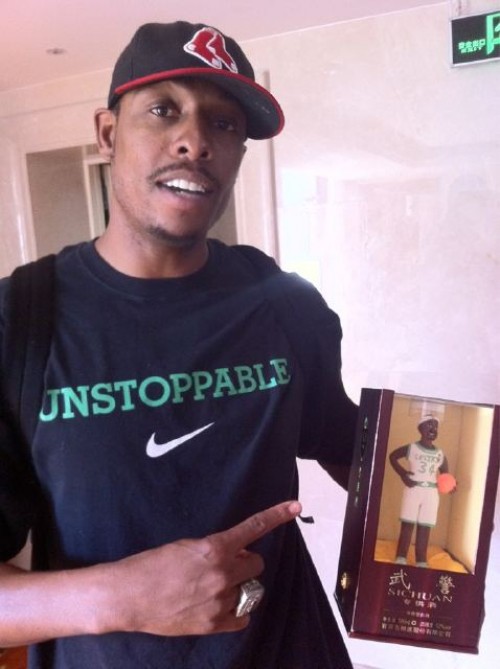
This is totally awesome. It also raises a lot of questions. How is it that, in the past several years, basketball has gained such popularity in China that an NBA star’s visit would bring about a promotional figurine? Why might a figurine in China be made out of chocolate? (See also China’s Chocolate War.) Moreover, it seems plain to me, but others might not agree — racial factors are at play here, intentionally or otherwise, are they not? Put more simply, would Larry Bird’s figurine have been made out of white chocolate? For more on the complexities of chocolate and race, see Cadbury’s ill-fated advertising campaign in 2009. Oh, and then again in 2011. This is just the tip of the iceberg. How does this figurine exemplify or differ from the other ways that chocolate is used in ritual or commemoration? And, for those of you who experience a certain sadness when eating chocolate bunnies, would you do the humane thing and eat Pierce’s figurine head first?
Here are nearly five minutes of excellent reasons for Pierce’s commemoration:
While we’re at it, check out Pierce’s inspirational campaign:
Paul Pierce’s Truth on Health campaign empowers and encourages young people to lead healthier lives by providing them with the information, resources, and tools necessary to become more active and physically fit. To learn more, visit www.truthonhealth.org.
Yeah, the world of chocolate is wacky.
Harvard’s Science and Cooking Class returns, chocolate on the menu again
In the fall of 2010, Harvard’s School of Engineering and Applied Sciences (SEAS) and the Alícia Foundation debuted a new general education class called Science and Cooking: From Haute Cuisine to Soft Matter Science. The subject matter was incredibly popular — approximately 700 undergraduates lotteried for 300 spots and hundreds of local citizens attended the crowded public lectures. The course itself became a celebrity of sorts in the press. The good news is that this year, they’re doing it all again. Science and Cooking is back for a second semester with another rocking list of famous lecturers.
Class instructors Professor David Weitz and Preceptor Pia Sörensen definitely have their priorities straight, as with only thirteen lecture slots available they have managed to fit in an entire evening devoted to chocolate. On Monday, September 19, 2011, at 7pm, speaker Ramon Morató of Aula Chocovic will present a lecture entitled “The Many Faces of Chocolate.”
Click here for more information on the class. As detailed on the course website, evening lectures are open to the general public and are also made available for viewing on iTunes U and YouTube.
As an observer from Harvard’s social sciences and humanities flank, I was thrilled by several things about the first installment of Science and Cooking. First, the class was designed as a collaboration amongst a diverse group of people and organizations — faculty and graduate student teaching staff, some of the world’s best known chefs and food science experts, educational institutions, local businesses, and undergraduate learners. Second, the class incorporated a hands-on lab component that took lecturing, reading, and abstract thinking about science and cooking into real world observation and experimentation. Third, the evening lectures were open to the general public. (This turned out to be tricky because interest was high and space was limited, but the problem was quickly solved when lecture videos were put online for all to see. This year, the course has also found a bigger lecture hall.). “Now this is how learning should happen!” I cheered.
Of course, being from said social sciences and humanities flank, I was all the while asking silent questions of the class, some casually critical. Why are so many of the chefs for this class European/Caucasian? Why are so many of them male? Whose cooking is this class about? Is modernist cuisine perhaps over represented? Could this type of class even be offered elsewhere (without the brand, the $$$, the snazzy PR)? Will students be introduced to the environmental science that affects the food that they will ultimately cook? Or the health and nutrition science that will in many ways define their quality of life? Or even the social science that could help them to understand the people and cultural traditions involved at every stage of science and cooking? Hmmm…
I could go on and on, but really, who asked me anyway? One class can’t actively teach everything all at once. The related issues that concern me actually came up over and over again on their own – audience members and students asked about them and, while the occasional lecturer balked at the idea of getting political in a science class, many responded passionately and were enthusiastic to share their knowledge and opinions. A number of my former students who took Science and Cooking approached me in one-on-one meetings to chat about the class and how it related to what we had studied together. Once again, I was thrilled. A successful learning experience encourages curiosity in students to further investigate their world. As food studies become more prominent on college campuses, more classes addressing these issues are being developed and offered. Science and Cooking is a very important step along the way; it serves as a jumping off point for many other discussions, and it has undoubtedly inspired me and countless others to dream big about food and education.
Happily for us chocolate lovers, two of the lectures last year dealt with chocolate and they are available to watch online. Enjoy!
- White House pastry chef Bill Yosses presented a lecture entitled “Brain Candy: How Desserts Slow the Passage of Time,” on October 28, 2010. Yosses’ engaging lecture takes viewers through the making of chocolate mousse, sharing lots of useful chocolate science notes and even a few tidbits about the chocolate preferences of the First Couple.
- Enric Rovira, the Barcelona-based chocolatier, presented a lecture entitled “Heat, Temperature and Chocolate,” on November 12, 2010. While Rovira’s lecture does not go into great scientific detail, it does give an overview of his gorgeous line of chocolates and his collaboration with chocolate maker Claudio Corallo.
